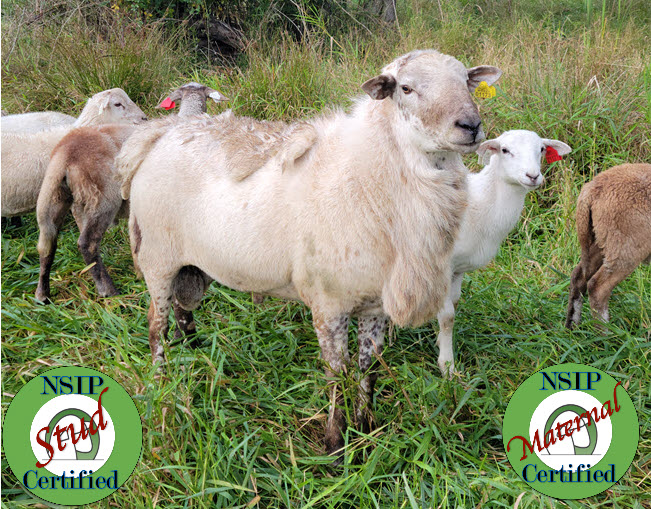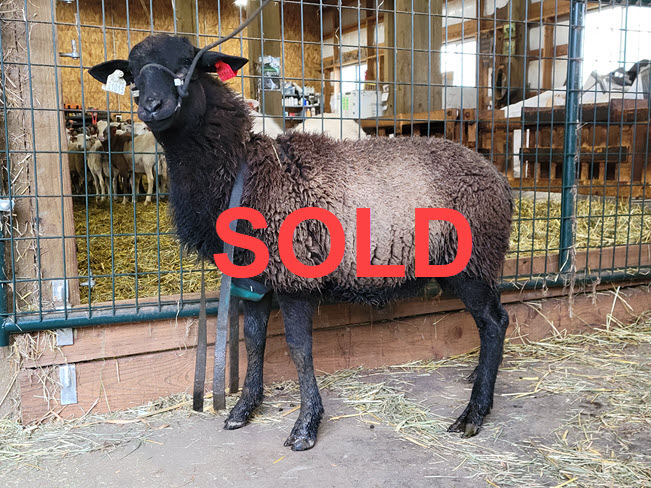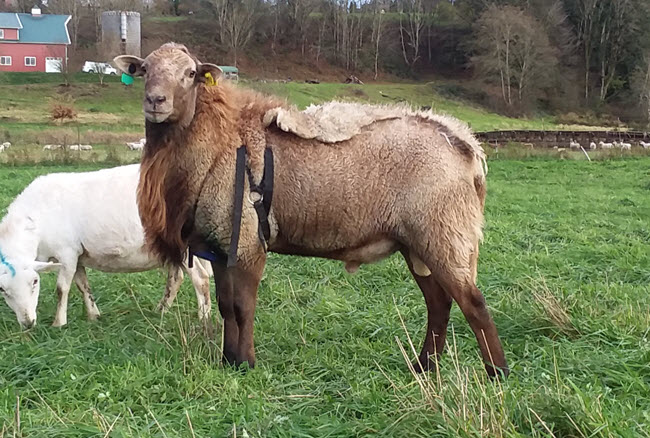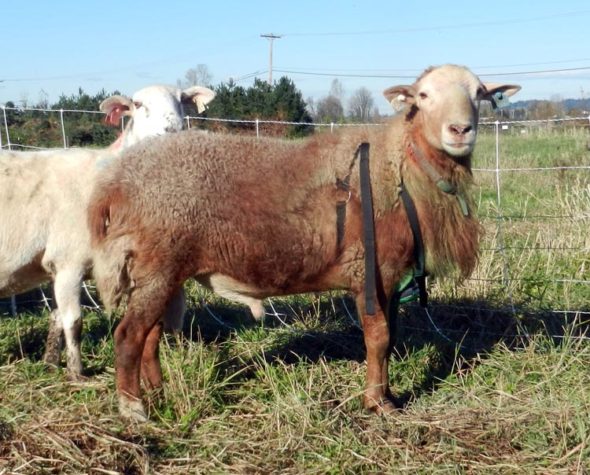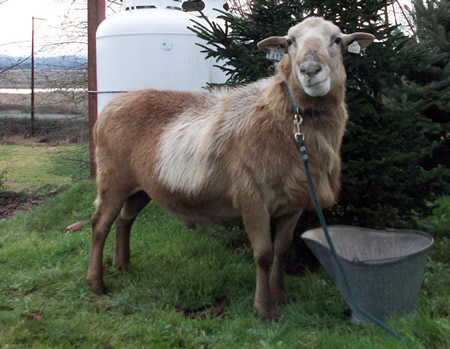Offered for sale as a purebred proven registered Katahdin Ram $700
I purchased this ram from David Coplen in 2019 and air freighted him to Washington. I really like using David’s genetics because he has been in NSIP a long time; and runs a grass-fed operation with very low inputs, so his animals pass on a lot of vigor, hardiness and good maternal instincts. Plus, he is well-connected to the Midwest Katahdin genetics, which helps us with “connectedness” in NSIP (we have been a bit of an island out in the PNW and are trying to improve that).
David has been bringing in some Texel genetics, then upgrading back to purebred Katahdin. This ram is a product of that venture. The positives are that we can benefit from some heterosis (hybrid vigor) and also the myostatin or “double muscling” gene that’s common in Texels (that’s what gives Texels that “pig ham” back end). The drawbacks are some setbacks in hair coats; but this is minor considering the bigger strides we’ll make in meat production. This ram a 87.5%. He did not shed adequately as a yearling, but did as a two-year-old, so that’s when I finally upgraded him. Subsequently, his lambs can be fully registered. He does throw a few shaggy lambs, but most of his progeny shed sufficiently.
Cheech has really strong growth and maternal EBVs across the board, one of the rare rams whose scores have held or gone up as he gets more progeny and daughters in the system. He is both NSIP Stud Certified and Maternal Certified. He is a really special ram, a very high percentile individual whose numbers won’t drift like a young ram. He has 128 lambs in the system spanning five lamb crops. His PR is weaker, though with lower accuracy in the data, as I’ve only done data collection on his grandchildren+ progeny at my farm one year (no direct lambs out of him). He is a substantial animal, both muscled and tall. Mostly white, but has some brown freckling and one large mahogany spot on his hip, ala Wiltshire Horn genetics. His temperament is calm and reserved, he leads ok on a halter. You can review his current EBVs on NSIP’s searchable database here. Photo taken September 2021. EBVs below from 2024 lamb crop birth data. He is NSIP genotyped. Nearly half the ewes at my farm now trace back to this guy, he has made such an impact; so it’s time for him to go improve someone else’s flock. Let him leapfrog your progress on growth, prolificacy and milk this next season!
| BWT | WWT | PWWT | NLB | NLW | MBWT | MWWT | MAT$ | HAIR |
| 0.346 70th % |
2.844 90th % |
4.198 70th % |
16% 80th % |
24% 95th % |
0.685 99th % |
2.041 99th % |
139.84 | 105.74 98th % |
| BC H 973 “Cheech” (upgraded) Twin birth DOB: 1/27/19 QR at codon 171 Myostatin gene: DNA results are inconclusive, but he’s clearly a carrier as he throws a lot of carrier lambs CC OPP gene (susceptible) |
BC G 933-22 (75%) | BC F 895-22 (50% Texel) | BC 0669 (Texel) |
| BC C 307-22 | |||
| BC D 341-22 | USD 3234 | ||
| BC A 170-22 | |||
| BC D 337-22 | FAH 12-118 | WSK 4298 | |
| FAH 11-013 | |||
| BC A 146-21 (75%) | MOF 1107 | ||
| BC X 82-12 (50%) |
